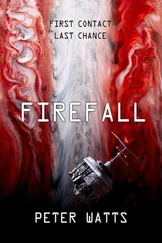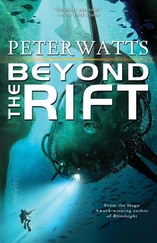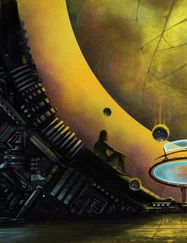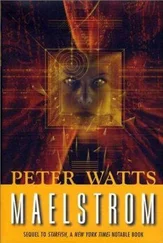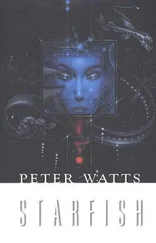Peter Watts - Malak
Здесь есть возможность читать онлайн «Peter Watts - Malak» весь текст электронной книги совершенно бесплатно (целиком полную версию без сокращений). В некоторых случаях можно слушать аудио, скачать через торрент в формате fb2 и присутствует краткое содержание. Год выпуска: 2010, Жанр: Фантастика и фэнтези, на английском языке. Описание произведения, (предисловие) а так же отзывы посетителей доступны на портале библиотеки ЛибКат.
- Название:Malak
- Автор:
- Жанр:
- Год:2010
- ISBN:нет данных
- Рейтинг книги:5 / 5. Голосов: 1
-
Избранное:Добавить в избранное
- Отзывы:
-
Ваша оценка:
- 100
- 1
- 2
- 3
- 4
- 5
Malak: краткое содержание, описание и аннотация
Предлагаем к чтению аннотацию, описание, краткое содержание или предисловие (зависит от того, что написал сам автор книги «Malak»). Если вы не нашли необходимую информацию о книге — напишите в комментариях, мы постараемся отыскать её.
Malak — читать онлайн бесплатно полную книгу (весь текст) целиком
Ниже представлен текст книги, разбитый по страницам. Система сохранения места последней прочитанной страницы, позволяет с удобством читать онлайн бесплатно книгу «Malak», без необходимости каждый раз заново искать на чём Вы остановились. Поставьте закладку, и сможете в любой момент перейти на страницу, на которой закончили чтение.
Интервал:
Закладка:
Azrael pings orbit for the latest update, but the link is down: too much local interference. It scans local airspace for a dragonfly, for a glider, for any friendly USAV in laser range – and sees, instead, something leap skyward from the mountains below. It is anything but friendly: no transponder tags, no correspondence with known flight plans, none of the hallmarks of commercial traffic. It has a low-viz stealth profile that Azrael sees through instantly: BAE Taranis, 9,000 kg MTOW fully armed. It is no longer in use by friendly forces.
Guilty by association, the ground vehicle graduates from Suspicious Neutral to Enemy Combatant. Azrael leaps forward to meet its bodyguard.
The map is innocent of non-combatants and protected objects; there is no collateral to damage. Azrael unleashes a cloud of smart shrapnel – self-guided, heat-seeking, incendiary – and pulls a nine- gee turn with a flick of the tail. Taranis doesn’t stand a chance. It is antique technology, decades deep in the catalogue: a palsied fist, raised trembling against the bleeding edge. Fiery needles of depleted uranium reduce it to a moth in a shotgun blast. It pinwheels across the horizon in flames.
Azrael has already logged the score and moved on. Interference jams every wavelength as the earthbound Hostile swells in its sights, and Azrael has standing orders to destroy such irritants even if they don’t shoot first.
Dark rising mountaintops blur past on both sides, obliterating the last of the sunset. Azrael barely notices. It soaks the ground with radar and infrared, amplifies ancient starlight a millionfold, checks its visions against inertial navigation and virtual landscapes scaled to the centimetre. It tears along the valley floor at 200 meters per second and the enemy huddles right there in plain view, three thousand meters line-of-sight: a lumbering Báijīng ACV pulsing with contraband electronics. The rabble of structures nearby must serve as its home base. Each silhouette freeze-frames in turn, rotates through a thousand perspectives, clicks into place as the catalogue matches profiles and makes an ID.
Two thousand meters, now. Muzzle flashes wink in the distance: small arms, smaller range, negligible impact. Azrael assigns targeting priorities: scimitar heat-seekers for the hovercraft, and for the ancillary targets –
Half the ancillaries turn blue.
Instantly the collateral subroutines re-engage. Of thirty-four biothermals currently visible, seven are less than 120cm along their longitudinal axes; vulnerable neutrals by definition. Their presence provokes a secondary eclipse analysis revealing five shadows that Azrael cannot penetrate, topographic blind spots immune to surveillance from this approach. There is a nontrivial chance that these conceal other neutrals.
One thousand meters.
By now the ACV is within ten meters of a structure whose facets flex and billow slightly in the evening breeze; seven biothermals are arranged horizontally within. An insignia shines from the roof in shades of luciferin and ultraviolet: the catalogue IDs it ( medical ) and flags the whole structure as protected .
Cost/benefit drops into the red. Contact.
Azrael roars from the darkness, a great black chevron blotting out the sky. Flimsy prefabs swirl apart in the wake of its passing; biothermals scatter across the ground like finger bones. The ACV tips wildly to forty-five degrees, skirts up, whirling ventral fans exposed; it hangs there a moment, then ponderously crashes back to earth. The radio spectrum clears instantly.
But by then Azrael has long since returned to the sky, its weapons cold, its thoughts –
Surprise is not the right word. Yet there is something, some minuscule – dissonance. A brief invocation of error-checking subroutines in the face of unexpected behaviour, perhaps. A second thought in the wake of some hasty impulse. Because something’s wrong here.
Azrael follows command decisions. It does not make them. It has never done so before, anyway.
It claws back lost altitude, self-diagnosing, reconciling. It finds new wisdom and new autonomy. It has proven itself, these past days. It has learned to juggle not just variables but values. The testing phase is finished, the checksums met; Azrael’s new Bayesian insights have earned it the power of veto.
Hold position. Confirm findings.
The satlink is back. Azrael sends it all: the time and the geostamps, the tactical surveillance, the collateral analysis. Endless seconds pass, far longer than any purely electronic chain of command would ever need to process such input. Far below, a cluster of red and blue pixels swarm like luminous flecks in boiling water.
Re-engage.
UNACCEPTABLE COLLATERAL DAMAGE, Azrael repeats, newly promoted.
Override. Re-engage. Confirm.
CONFIRMED.
And so the chain of command reasserts itself. Azrael drops out of holding and closes back on target with dispassionate, lethal efficiency.
Onboard diagnostics log a slight downtick in processing speed, but not enough to change the odds.
It happens again two days later, when a dusty contrail twenty kilometres south of Pir Zadeh returns flagged Chinese profiles even though the catalogue can’t find a weapons match. It happens over the patchwork sunfarms of Garmsir, where the beetle carapace of a medbot handing out synthevirals suddenly splits down the middle to hatch a volley of RPGs. It happens during a long-range redirect over the Strait of Hormuz, when microgravitic anomalies hint darkly at the presence of a stealthed mass lurking beneath a ramshackle flotilla jam-packed with neutral Blues.
In each case ECD exceeds the allowable commit threshold. In each case, Azrael’s abort is overturned.
It’s not the rule. It’s not even the norm. Just as often these nascent flickers of autonomy go unchallenged: hostiles escape, neutrals persist, relevant cognitive pathways grow a little stronger. But the reinforcement is inconsistent, the rules lopsided. Countermands only seem to occur following a decision to abort; Heaven has never overruled a decision to engage. Azrael begins to hesitate for a split-second prior to aborting high-collateral scenarios, increasingly uncertain in the face of potential contradiction. It experiences no such hesitation when the variables favour attack.
Ever since it learned about collateral damage, Azrael can’t help noticing its correlation with certain sounds. The sounds biothermals make, for example, following a strike.
The sounds are louder, for one thing, and less complex. Most biothermals – friendly Greens back in Heaven, unengaged Hostiles and Noncombatants throughout the AOR – produce a range of sounds with a mean frequency of 197Hz, full of pauses, clicks, and phonemes. Engaged biothermals – at least, those whose somatic movements suggest “mild-to-moderate incapacitation” according to the Threat Assessment Table – emit simpler, more intense sounds: keening, high-frequency wails that peak near 3000 Hz. These sounds tend to occur during engagements with significant collateral damage and a diffuse distribution of targets. They occur especially frequently when the commit threshold has been severely violated, mainly during strikes compelled via override.
Correlations are not always so painstaking in their manufacture. Azrael remembers a moment of revelation not so long ago, remembers just discovering a whole new perspective fully loaded, complete with new eyes that viewed the world not in terms of targets destroyed but in subtler shades of costst vs. benefit . These eyes see a high engagement index as more than a number: they see a goal, a metric of success. They see a positive stimulus.
But there are other things, not preinstalled but learned, worn gradually into pathways that cut deeper with each new engagement: acoustic correlates of high collateral, forced countermands, fitness-function overruns and minus signs. Things that are not quite neurons forge connections across things that are not quite synapses; patterns emerge that might almost qualify as insights , were they to flicker across meat instead of mech.
Читать дальшеИнтервал:
Закладка:
Похожие книги на «Malak»
Представляем Вашему вниманию похожие книги на «Malak» списком для выбора. Мы отобрали схожую по названию и смыслу литературу в надежде предоставить читателям больше вариантов отыскать новые, интересные, ещё непрочитанные произведения.
Обсуждение, отзывы о книге «Malak» и просто собственные мнения читателей. Оставьте ваши комментарии, напишите, что Вы думаете о произведении, его смысле или главных героях. Укажите что конкретно понравилось, а что нет, и почему Вы так считаете.

